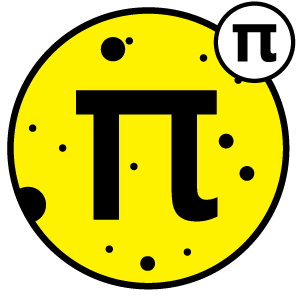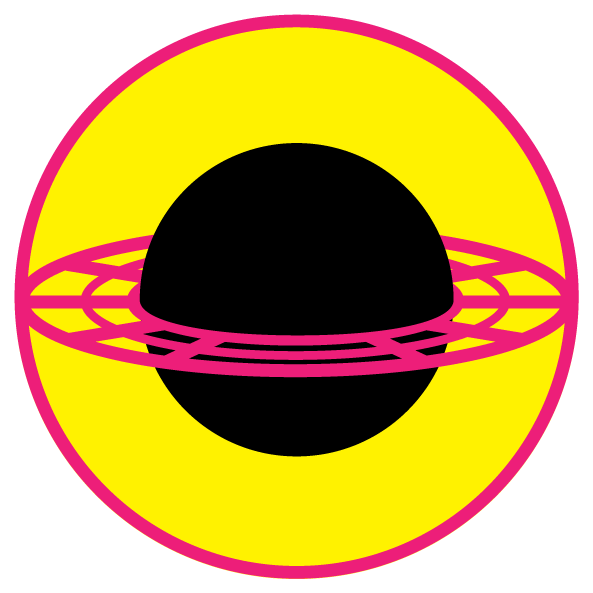Sky Constellation Shapes and Resources
null
from an undefined
place,
undefined
create (a place)
an account
of us
— Viorica Hrincu
Having recently drawn a few skycharts (Superclusters & Voids, Sanctuary Project), I was frustrated by the lack of parsable resources for the Constellations. Not being able to find a plain-text parsable definition of the constellation figures proved impossible, I created my own.
Quotes on this page are from my conversation with the folks at Sky & Telescope and IAU.
contents
- 1 · Constellation figures
- 1.1 · Contents
- 1.1.1 · Bright Star Catalogue
- 1.1.2 · Constellation figure paths
- 1.1.3 · Constellation figure lines
- 1.1.4 · Constellation boundary lines
- 1.1.5 · Constellation boundary paths
- 1.2 · Changes
- 1.3 · Corrections
- 1.4 · Sky & Telescope magazine format
- 2 · Bitmap, SVG and PDF constellation shapes
The figures are based on the set drawn by Alan MacRobert for Sky and Telescope. These figures are used in Sky & Telescope's Pocket Sky Atlas by Roger Sinnott and appear in the Wikipedia entries for each constellation as well as on pages by the International Astronomical Union (IAU).
This file contains all the information you need to draw basic star maps (with name and designation labels) and constellation figures.
The file contains a long header that explains the contents. It has been formatted to be friendly to UNIX-style command-line tools — grep away!
This is the most complete (and self-contained) sky constellation dataset of its kind.
All stars in the Yale Bright Star Catalogue are reported (9,114 entries, see below). Each star has an entry like this
where the fields are
The Yale Bright Star Catalogue has 9,110 star entries. There are four additional entries in my file: HR 9602, HR 4796/4796A, HR 5727/5728 and HR 8799/8799A.
These entries are the consequence of SIMBAD records having more than one HR index value.
Each of the 88 constellations has its figure summarized in a line like this
The line reports the figure as a set of comma-delimited connections, each represented by a start and end point, which are identified by the corresponding star's HR index and its Bayer (or Flamsteed) designation. The thickness (which can be 1, 2 or 3) of the connection line is the middle digit.
For each constellation, each figure line is reported individually.
where the fields are
Piece-wise linear constellation boundaries are reported in conbound_pair lines. These boundaries are taken from https://vizier.cds.unistra.fr/viz-bin/VizieR-3?-source=VI/49/bound_18.
For example, the boundaries for Crux are
where each line reports a boundary line between two (ra,dec) points. The fields are
Each conbound_pair line is followed by a conbound_path line that reports the representation of the line segment along a great circle. This makes for nicer paths on maps using projections such as azimuthal equidistant.
+ added constellation boundaries + now all stars in Yale BSC are reported + records for line points that do not connect fully to a star (there's a gap between the end of the line and a star) are modified with ra/dec offsets + records for line points that are midpoints between two stars are annotated with the HR index of both stars + added shape for Microscopium, which is a wishbone analogous to Telescopium with the bonus that they point at each other + modified shape for Telescopium to be a wishbone by adding connection between alpha and midpoint between delta 1 and 2.
+ magnitude of alpha Com fixed to 4.32 from 5.08, which is the V magnitude reported in SIMBAD. + fixed midpointa 31-o3 (in Cygnus, which was a little off, as can be seen on this map old 3 20.25019 42.5288 31-o3Cyg 7735,7751 new 3.8 20.24253 42.7722 31-o3Cyg 7735,7751 The stars have Simbad V magnitude 3.8 (31 Omi, o1) and 3.98 (31 Cyg, omi2), so the brighter is used. + The second entry for delta Vela had a slightly different ra/de 1.95 8.74506 144.7083 dlt 2Vel ... 5.1 8.74469 144.7003 dlt 2Vel I could not find a reason for this -- tt may be that the second record refers to delta Vel B (delta Velorum is a triple star system: Aa Ab and B). These stars are extremely close to each other so I've changed the second record to point to delta Vel A (same as first record).
The data source for the constellation shapes was provided to be by Roger Sinnott in an in-house format used by Sky & Telescope's sky charting software.
I worked from this file to create edits and correction and provide an updated version of this file here. Unless you're working with the S&T software, you're likely to find the file linked to above more useful.
The shapes of all the constellations and the stars that define the asterisms shown in the image below. I also include all the 110 Messier objects with common names in this map (hollow circles).
The map also shows the galactic equator and the ecliptic. The vernal equinox, summer solstice, autumn equinox and winter solstice occur along the ecliptic at right ascension 0/360 (Pices), 270 (Sagittarius), 180 (Vigo) and 90 (Gemini/Taurus).
Whole-sky star charts are traditionally drawn with 360 right ascention on the left in decreasing order towards 0 on the right.
You can download this file as PNG, SVG or PDF.
If you're interested in more astronomical resources, check out my Universe Superclusters and Voids resource page.
Nasa to send our human genome discs to the Moon
We'd like to say a ‘cosmic hello’: mathematics, culture, palaeontology, art and science, and ... human genomes.



Comparing classifier performance with baselines
All animals are equal, but some animals are more equal than others. —George Orwell
This month, we will illustrate the importance of establishing a baseline performance level.
Baselines are typically generated independently for each dataset using very simple models. Their role is to set the minimum level of acceptable performance and help with comparing relative improvements in performance of other models.

Unfortunately, baselines are often overlooked and, in the presence of a class imbalance5, must be established with care.
Megahed, F.M, Chen, Y-J., Jones-Farmer, A., Rigdon, S.E., Krzywinski, M. & Altman, N. (2024) Points of significance: Comparing classifier performance with baselines. Nat. Methods 20.
Happy 2024 π Day—
sunflowers ho!
Celebrate π Day (March 14th) and dig into the digit garden. Let's grow something.

How Analyzing Cosmic Nothing Might Explain Everything
Huge empty areas of the universe called voids could help solve the greatest mysteries in the cosmos.
My graphic accompanying How Analyzing Cosmic Nothing Might Explain Everything in the January 2024 issue of Scientific American depicts the entire Universe in a two-page spread — full of nothing.
The graphic uses the latest data from SDSS 12 and is an update to my Superclusters and Voids poster.
Michael Lemonick (editor) explains on the graphic:
“Regions of relatively empty space called cosmic voids are everywhere in the universe, and scientists believe studying their size, shape and spread across the cosmos could help them understand dark matter, dark energy and other big mysteries.
To use voids in this way, astronomers must map these regions in detail—a project that is just beginning.
Shown here are voids discovered by the Sloan Digital Sky Survey (SDSS), along with a selection of 16 previously named voids. Scientists expect voids to be evenly distributed throughout space—the lack of voids in some regions on the globe simply reflects SDSS’s sky coverage.”
voids
Sofia Contarini, Alice Pisani, Nico Hamaus, Federico Marulli Lauro Moscardini & Marco Baldi (2023) Cosmological Constraints from the BOSS DR12 Void Size Function Astrophysical Journal 953:46.
Nico Hamaus, Alice Pisani, Jin-Ah Choi, Guilhem Lavaux, Benjamin D. Wandelt & Jochen Weller (2020) Journal of Cosmology and Astroparticle Physics 2020:023.
Sloan Digital Sky Survey Data Release 12
Alan MacRobert (Sky & Telescope), Paulina Rowicka/Martin Krzywinski (revisions & Microscopium)
Hoffleit & Warren Jr. (1991) The Bright Star Catalog, 5th Revised Edition (Preliminary Version).
H0 = 67.4 km/(Mpc·s), Ωm = 0.315, Ωv = 0.685. Planck collaboration Planck 2018 results. VI. Cosmological parameters (2018).
constellation figures
stars
cosmology
Error in predictor variables
It is the mark of an educated mind to rest satisfied with the degree of precision that the nature of the subject admits and not to seek exactness where only an approximation is possible. —Aristotle
In regression, the predictors are (typically) assumed to have known values that are measured without error.
Practically, however, predictors are often measured with error. This has a profound (but predictable) effect on the estimates of relationships among variables – the so-called “error in variables” problem.

Error in measuring the predictors is often ignored. In this column, we discuss when ignoring this error is harmless and when it can lead to large bias that can leads us to miss important effects.
Altman, N. & Krzywinski, M. (2024) Points of significance: Error in predictor variables. Nat. Methods 20.
Background reading
Altman, N. & Krzywinski, M. (2015) Points of significance: Simple linear regression. Nat. Methods 12:999–1000.
Lever, J., Krzywinski, M. & Altman, N. (2016) Points of significance: Logistic regression. Nat. Methods 13:541–542 (2016).
Das, K., Krzywinski, M. & Altman, N. (2019) Points of significance: Quantile regression. Nat. Methods 16:451–452.
Convolutional neural networks
Nature uses only the longest threads to weave her patterns, so that each small piece of her fabric reveals the organization of the entire tapestry. – Richard Feynman
Following up on our Neural network primer column, this month we explore a different kind of network architecture: a convolutional network.
The convolutional network replaces the hidden layer of a fully connected network (FCN) with one or more filters (a kind of neuron that looks at the input within a narrow window).

Even through convolutional networks have far fewer neurons that an FCN, they can perform substantially better for certain kinds of problems, such as sequence motif detection.
Derry, A., Krzywinski, M & Altman, N. (2023) Points of significance: Convolutional neural networks. Nature Methods 20:1269–1270.
Background reading
Derry, A., Krzywinski, M. & Altman, N. (2023) Points of significance: Neural network primer. Nature Methods 20:165–167.
Lever, J., Krzywinski, M. & Altman, N. (2016) Points of significance: Logistic regression. Nature Methods 13:541–542.






